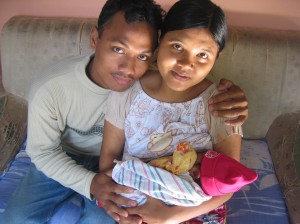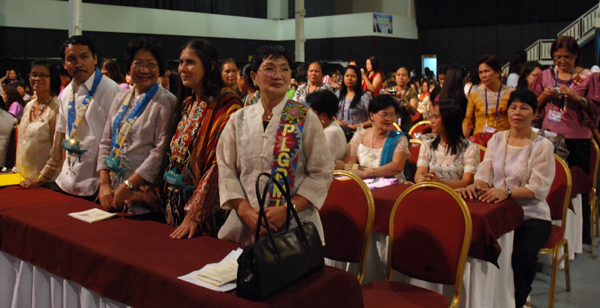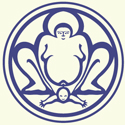Some say midwifery is romantic and a relic of the past. Technology is not the answer to reduce maternal and infant mortality rates.
The U.N. Millennium Development Goals have 2015 as their target of fulfillment, less than three years away. Three of the goals are of concern at Yayasan Bumi Sehat (Healthy Mother Earth Foundation) in Indonesia, where I am a midwife. Goals 4 through 6 are to reduce child mortality rates, improve maternal health, and combat HIV/AIDS, malaria and other diseases.
Unfortunately, the world is not nearly close enough to reaching these goals; goals which advocate for the basic human right to decent healthcare. May 5th is International Day of the Midwife and I find myself in General Santos City, Mindanao, Philippine Islands, where over 800 midwives are assembled for the Philippine League of Midwives National Congress, a gathering of women passionate about achieving real solutions to the problem of maternal and child mortality.
According to the World Health Organization 981 women die everyday from pregnancy and birth related complications. These statistics are higher than if two 747 jets fell from the sky, killing a total of 832 passengers every single day. If airplanes fell from the sky daily, this would make front-page news. And for sure people would not fly until the problem was solved. However, nearly 1,000 women are dying daily in the prime of their lives, they are not elderly; not sick; they are pregnant and birthing women.
 These maternal deaths are driven by poverty, causing malnutrition and inadequate access to reproductive health services. They are mostly preventable. Even more discouraging: according to Amnesty International, the number of maternal deaths is significantly understated because of a lack of effective data collection in the U.S., and, may I add, in the world.
These maternal deaths are driven by poverty, causing malnutrition and inadequate access to reproductive health services. They are mostly preventable. Even more discouraging: according to Amnesty International, the number of maternal deaths is significantly understated because of a lack of effective data collection in the U.S., and, may I add, in the world.
The mothers most at risk are African and Asian, minorities, those living in poverty, indigenous, immigrant or displaced women and those who speak little or no English. Many of the women who come to midwives for reproductive health services, are in these categories.
As a midwife, I have devoted a lifetime to hands-on helping, while thinking and working out the reasons for this tragedy. It is humbling. We must continue to ask, how can we work towards real solutions to this problem.
On my blog in the Huffington Post, one person posted this comment: “This is why we have hospitals. While it’s a romantic idea, midwifing is a relic of the past and needs to be outlawed.”
When they are needed, hospitals and the specialists who staff them are a miracle. That being said, I am convinced that the Midwife-to-Mother model of care is the best way to determine if the risks for mother and baby are high. In the care of midwives, mothers have the best possible chance for better birth outcomes, with less use of technology and much less cost. In the experience of the Bumi Sehat childbirth clinics in Bali and Aceh, where over 4,000 babies have been born, midwives are the care providers who take the time needed to prevent tragedy.
The comment above may be expected from someone coming from a Western mentality such as the US or some countries in Europe. Possibly thousands more people in Indonesia, the place I live and teach midwifery skills, think the same. But I am grateful that the Indonesian government, through the Ministry of Health, does not view the issue in this way.
The Indonesian Ministry of Health has shown a growing support through initiating programs that improve the role of midwives, especially in remote villages where the residents may have never even seen a car. It is an unavoidable fact that midwives are the gateway to providing reproductive health care to rural residents in many areas.
If you believe that hospital based childbirth, attended exclusively by doctors of obstetrics and gynecology, is the answer, consider that although the U.S. spends more than any other country on childbirth technology; statistics released in September 2010 by the U.N. place the United States far behind other developed countries in the world for maternal mortality. Women in the U.S. have a higher risk of dying from pregnancy-related complications than women in 40 other countries.
The heart of how we care for our mothers, babies and families is the care we show for the dispossessed and the disenfranchised. While I dotted that last sentence, another woman died in childbirth. This is intolerable, every mother counts. You can clap your hands and say, “I do believe in technology,” but it won’t change anything. If you personally wish to see significant reduction in the numbers of mothers and babies dying, clap your hands and say, “I do believe in Midwives!”
Today, I am spending International Day of the Midwife in the Philippines with midwives from my own mother’s homeland. My Lola (grandmother) was a Filipino hilot, a traditional midwife, before there were hospitals to fall back on. She practiced respect for nature and for the culture of women. Today, midwives have excellent training in the science of medicine.
Midwives stand on three strong feet: respect for nature, honoring culture and sound science. To all my sister midwives out there: if some view us as too romantic or a relic of the past, don’t let this refrain you from saving lives with the loving touch of mothers. Happy Day of the Midwife.
Main photo by Verginie Noel.












